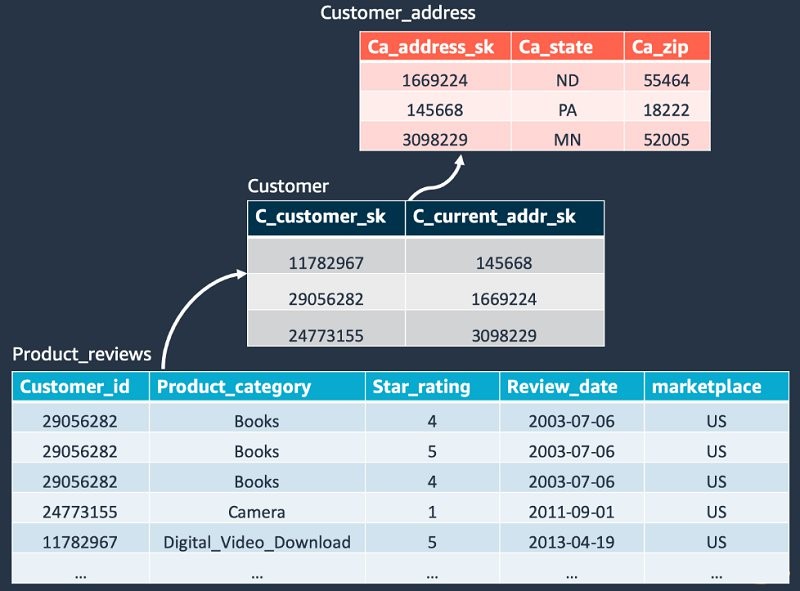AWS Big Data Blog
Automate building an integrated analytics solution with AWS Analytics Automation Toolkit
This blog post was last reviewed and updated July 2022, to be consistent with the new menu interface launched by the AWS Analytics Automation Toolkit. Amazon Redshift is a fast, fully managed, widely popular cloud data warehouse that powers the modern data architecture enabling fast and deep insights or machine learning (ML) predictions using SQL […]
Accelerate large-scale data migration validation using PyDeequ
March 2023: You can now use AWS Glue Data Quality to measure and manage the quality of your data. AWS Glue Data Quality is built on DeeQu and it offers a simplified user experience for customers who want to this open-source package. Refer to the blog and documentation for additional details. Many enterprises are migrating their […]
Stream data from relational databases to Amazon Redshift with upserts using AWS Glue streaming jobs
Traditionally, read replicas of relational databases are often used as a data source for non-online transactions of web applications such as reporting, business analysis, ad hoc queries, operational excellence, and customer services. Due to the exponential growth of data volume, it became common practice to replace such read replicas with data warehouses or data lakes […]
Build operational metrics for your enterprise AWS Glue Data Catalog at scale
Over the last several years, enterprises have accumulated massive amounts of data. Data volumes have increased at an unprecedented rate, exploding from terabytes to petabytes and sometimes exabytes of data. Increasingly, many enterprises are building highly scalable, available, secure, and flexible data lakes on AWS that can handle extremely large datasets. After data lakes are […]
Configure single sign-on authentication for Amazon Athena with Azure AD integrated to on-premises AD
Amazon Athena is an interactive query service that makes it easier to analyze data directly in Amazon Simple Storage Service (Amazon S3) using standard SQL. Cloud operation teams can use AWS Identity and Access Management (IAM) federation to centrally manage access to Athena. This simplifies administration by allowing a governing team to control user access […]
Automate Amazon Redshift Cluster management operations using AWS CloudFormation
Amazon Redshift is a fast, petabyte-scale cloud data warehouse delivering the best price-performance. Tens of thousands of customers run business-critical workloads on Amazon Redshift. Amazon Redshift offers many features that enable you to build scalable, highly performant, cost-effective, and easy-to-manage workloads. For example, you can scale an Amazon Redshift cluster up or down based on […]
Compare different node types for your workload using Amazon Redshift
February 2023: This post was reviewed and updated to include support for Amazon Redshift Serverless. The Amazon Redshift Node Configuration Comparison utility latest release now supports Amazon Redshift Serverless to test your workload performance. If you want to either explore different Amazon Redshift Serverless configurations or combination of Amazon Redshift Provisioned and Serverless configurations based […]
Migrate to an Amazon Redshift Lake House Architecture from Snowflake
The need to derive meaningful and timely insights increases proportionally with the amount of data being collected. Data warehouses play a key role in storing, transforming, and making data easily accessible to enable a wide range of use cases, such as data mining, business intelligence (BI) and reporting, and diagnostics, as well as predictive, prescriptive, […]
Extract, prepare, and analyze Salesforce.com data using Amazon AppFlow, AWS Glue DataBrew, and Amazon Athena
As organizations embark on their data modernization journey, big data analytics and machine learning (ML) use cases are becoming even more integral parts of business. The ease for data preparation and seamless integration with third-party data sources is of paramount importance in order to gain insights quickly and make critical business decisions faster. AWS Glue […]
Create and reuse governed datasets in Amazon QuickSight with new Dataset-as-a-Source feature
Amazon QuickSight is a fast, cloud-powered, business intelligence (BI) service that makes it easy to deliver insights to everyone in your organization. QuickSight recently introduced Dataset-as-a-Source, a new feature that allows data owners to create authoritative datasets that can then be reused and further extended by thousands of users across the enterprise. This post walks […]








